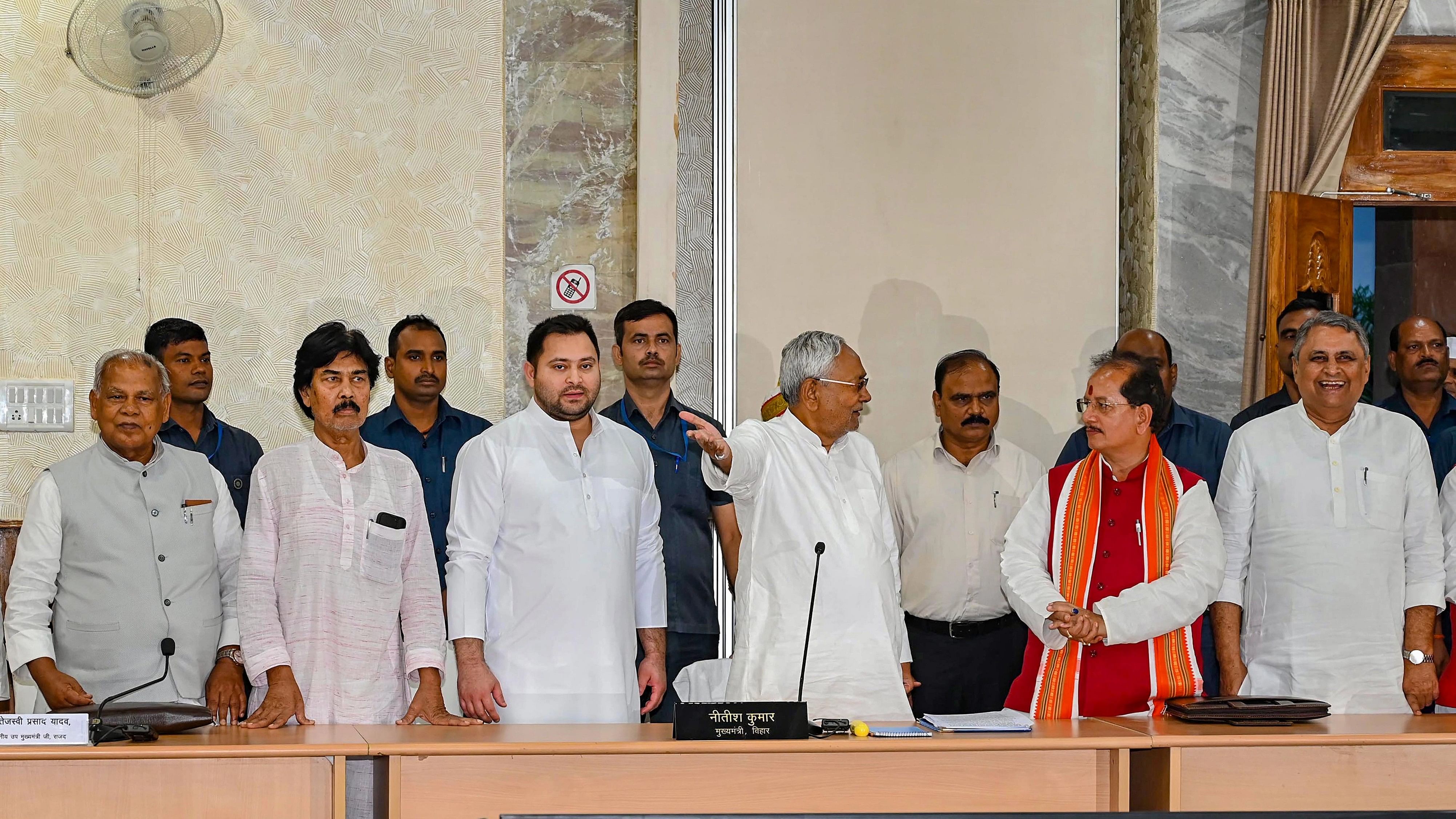
Bihar Chief Minister Nitish Kumar, Deputy Chief Minister Tejashwi Yadav, Leader of Opposition in Bihar Assembly Vijay Kumar Sinha and other leaders during all parties meeting Bihar Caste Census at the CM Secretariat, in Patna, Tuesday, Oct. 3, 2023.
PTI Photo
The release of the caste survey undertaken by the Bihar government is likely to bring caste, in a new social justice format, to the forefront of politics when the country is moving into a period when some important Assembly elections and the Lok Sabha elections are to be held. The impact of the survey is also likely to be seen beyond the elections, with predictions being made of the advent of a ‘Mandal 2.0’ phase. The representation of Backward Castes (BCs) in all areas, including government, public service, and education, was the crux of the Mandal politics that changed the country after the then Prime Minister V P Singh implemented the Mandal Commission report in 1990. The Mandal report was not based on any exact enumeration of the Backward Class communities but on the outdated 1931 census. The Bihar census has now shown that the Other Backward Classes (OBCs) and the Extremely Backward Classes (EBCs) constitute more than 63% of the state’s population, with the EBCs constituting 36% and the OBCs 27.13%.
Mandal politics had the most impact in the North Indian states, especially UP and Bihar, where parties representing the Backward Classes like the Yadavs gained ascendence. The Hindutva narrative introduced by the BJP later trumped the backward class politics by pushing to the front positions backward class leaders, co-opting the EBCs into its fold and creating new electoral equations which helped it to gain dominance. These equations may now be challenged with figures showing the preponderance of EBCs as seen in the survey. Demands for a national survey have been made by the Mandal parties and the Congress. Such surveys will give a correct picture of the relative numerical positions of various castes and would certainly trigger demands for a review of the present reservation scheme.
Many moves have been made to bring the Backward Caste politics into focus. There were strong demands for a quota within quota when the Women’s Reservation Bill was debated in parliament. The report of the Justice G Rohini Commission on the sub-categorisation of the BCs was recently submitted to the central government. The Modi government has opposed a new caste census because a new social justice politics would pose a threat to the BJP. It told the Supreme Court that it would be “administratively difficult and cumbersome”, and has refused to make public the 2013 socio-economic census data. Reacting to the release of the Bihar caste census data, Prime Minister Modi has said that the Opposition is trying to divide the country on caste lines, conveniently forgetting that the BJP’s politics itself is based on creating a religious divide and polarisation. Though it is too early to say how the new politics will shape up, the Opposition, especially the I.N.D.I.A bloc, is certain to push it.